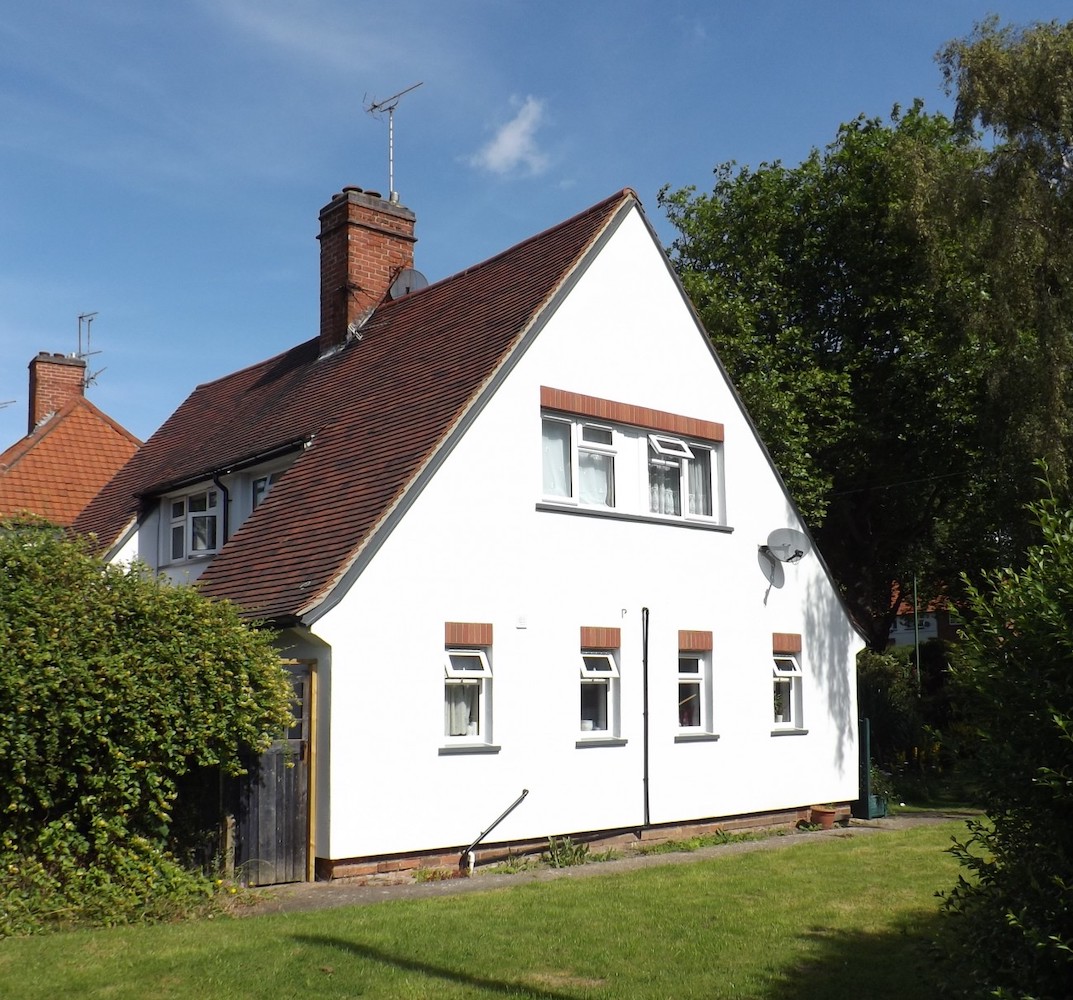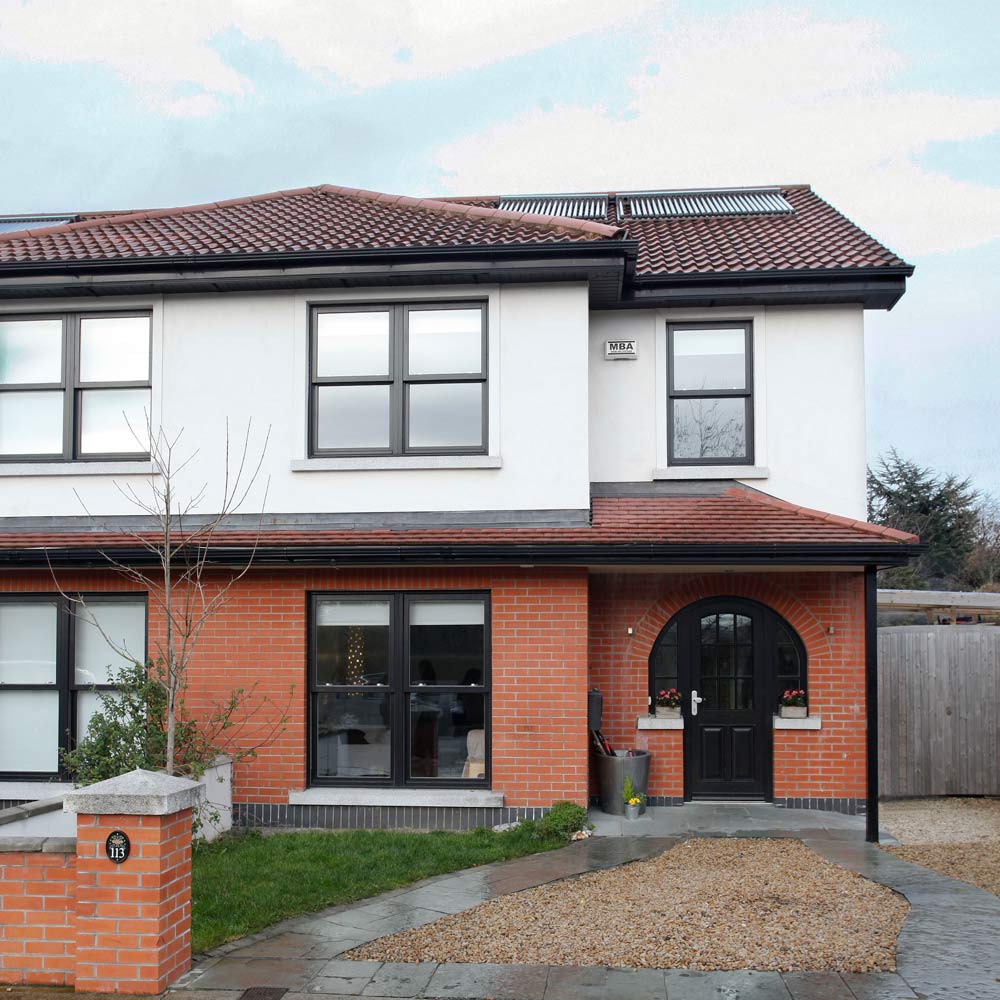A guide to external wall insulation - your questions answered
Increase your home’s energy efficiency and cut energy bills with EWI

One of three potential ways to insulate the walls of your home is external wall insulation, with the other options being cavity wall and internal insulation. The right solution for you will be determined by the makeup of your property and its location – an experienced and approved installer will be able to survey your home and decide which is best.
Adding external wall insulation (EWI) to your house is an effective way to save energy by reducing the amount needed to heat your home, saving you money on energy bills as well as lowering your carbon footprint.
‘The best way to make your home more energy efficient is to improve the fabric of the house, such as the walls,’ says Simon Storer, Chief Executive at the Insulation Manufacturers Association. ‘Make insulation as good as it can be to the get the best from the structure.’
External wall insulation is the go-to option to upgrade the thermal efficiency of homes with solid walls, made using a single layer of bricks. Most UK houses built before 1920 have solid walls and EWI is a great option if there are no planning restrictions on the property, such as listed building or conservation area status.
According to government research, by the end of December 2020 91% of solid wall homes still hadn’t been insulated*. so if you own one, here’s what you need to know to benefit from the energy and money savings external wall insulation can offer.
What are the benefits of external wall insulation?

Uninsulated walls allow around a third of the warmth pumped into a house to leak out (according to the Energy Saving Trust**). Making your central heating system work harder to maintain a comfortable temperature. External and cavity wall insulation will help to keep heating costs low because your boiler won’t need as much energy to keep a cosy environment.
Adding effective insulation means you’ll not only be spending less on heating bills, but you’ll also be using less fossil fuel. So external wall insulation can help to improve the sustainability credentials of your home. If you then install renewable tech to run your central heating, you’ll benefit from an even more environmentally friendly property.
Installing EWI doesn’t disrupt things inside your property in the way that internal insulation would, so you can easily live in the house during the work. It can also help to improve weatherproofing and sound resistance.
Sign up to our newsletter for style inspiration, real homes, project and garden advice and shopping know-how
Adding external wall insulation is a good opportunity to update the appearance of your home. You could make it look pretty much identical to how it was previously or make some improvements to boost your house’s kerb appeal, possibly even increasing its value.
What types of external wall insulation are there?

Some external wall insulation products are vapour closed, meaning they do not absorb water and don’t easily allow the passage of water vapour. Other types of EWI are vapour open or breathable, so the material can absorb and quickly release moisture, allowing vapour to move through the walls, therefore maintaining a dry structure.
Being vapour open isn’t the same as being leaky, so you won’t be compromising on thermal and energy performance. Older solid wall homes were built to be vapour open and continuing this concept will help to maintain the moisture balance of the property.
Wood fibre is an excellent breathable option for external wall insulation on one-off projects. ‘Make sure you use a vapour open finish, too, such as a lime based render,’ says Will Kirkman, Managing Director at Ecomerchant. Mineral wool insulation is also breathable and non-combustible, but acts slightly differently to wood fibre and can’t be directly rendered.
Vapour closed (synthetic) external wall insulation options are generally known as rigid board insulation. They include PIR, PUR and EPS products. ‘A potential problem with synthetic materials on old houses is that the installation has to be so much more precise and durable – so make sure you’ve got a good installer and guarantee. Damaging the structure of your house can be extremely expensive to fix,’ says Will Kirkman.
While synthetic external wall insulation can go right down to ground level, for maximum coverage, wood fibre requires a plinth up to damp proof course (DPC) level.
Who supplies external wall insulation?

External wall insulation is generally provided on a supply-and-install basis. It should never be attempted DIY. having it installed without a full pre-assessment by an unqualified trade could have disastrous consequences.
Look for an installer that is registered with an appropriate association, such as the Insulation Assurance Authority. You’ll want a specialist that offers a 25-year guarantee, such as from the Solid Wall Insulation Guarantee Agency (SWIGA). These associations provide lists of approved regional installers on their websites, so that’s a great place to start your search.
A survey will need to be done before work can begin to assess which insulation type is best and whether any other alterations will be needed, such as adding extra ventilation.
‘We strongly recommend that before fitting any external wall insulation, your home is first assessed under the Retrofit Framework laid out in PAS 2035: 2019,’ says Matthew Evans at Kingspan Insulation. ‘This sets a clear process for assessing existing properties, identifying issues, and setting a clear improvement plan for raising the energy efficiency of your home. All TrustMark registered installers are required to follow this process on any work they carry out.’
Tips for installing external wall insulation
Get the most out of your external wall insulation by following our tips...
1. Work out your wall type
While external wall insulation can be suitable for a range of properties, it’s most commonly applied to homes with solid brick walls. It can be tricky to tell the makeup of your home’s walls, but there are some clues to look for.
Alternating brick patterns, with a makeup of exposed narrow and long ends, tend to be solid walls. The width of brick walls and the age of the house will also give indications.
2. Find an installer
Make sure your installer has good accreditations and can offer you real life examples of their work. If possible, chat to other homeowners who have used them to make sure they’re happy with the work and aftercare. Shop around for quotes of the external wall insulation cost and ask what kind of external finishes installers offer.
3. Have a survey

Your qualified installer will assess your walls to identify what insulation is best. They may identify some structural issues that must be resolved before the insulation is fitted. They will also let you know about small jobs that need sorting prior to work starting on site, such as removal of hanging baskets, readjustment of satellite dishes etc.
4. Get your external wall insulation installed
As the insulation is being applied to the outside of your home, you don’t need to move out while work is being carried out. Scaffolding will be erected and you can expect some noise while walls are being prepared and the insulation is fixed. Disruption should be minimal but install dehumidifiers where necessary.
5. Render or cladding applied
Your external wall insulation will be finished with either render or an exterior cladding system, such as brick slips to retain the masonry look. Installing EWI, including insulation and finish, typically takes around three to six weeks.
What maintenance is required for external wall insulation?
External wall insulation is an invisible part of your home that you won’t be able to see once in place. While it’s mostly a fit-and-forget solution, there are some things you can do to make sure that your EWI doesn’t lose its efficiency.
Good general property maintenance is important. Make sure that any external wall insulation problems you notice, such as cracks in the render, broken seals around windows or leaking guttering, are resolved quickly. This will protect the insulation against water ingress and preserve its performance.
Check the details of your guarantee, as changes to your newly-insulated external walls, such as painting render, fixing hanging baskets etc, could require careful consideration.
*Household Energy Efficiency Great Britain Data (gov.uk, 18th March 2021)

Rhoda Parry was the Editorial Director of Ideal Home and its sister titles, 25 Beautiful Homes and Style at Home from 2021-2022. She wass also Editorial Director for Gardeningetc, Amateur Gardening and Easy Gardens. Rhoda is a highly experienced editor and journalist and has worked on many women's lifestyle media brands throughout her career. For the last 20 years, she has specialised in homes, interiors and gardens.